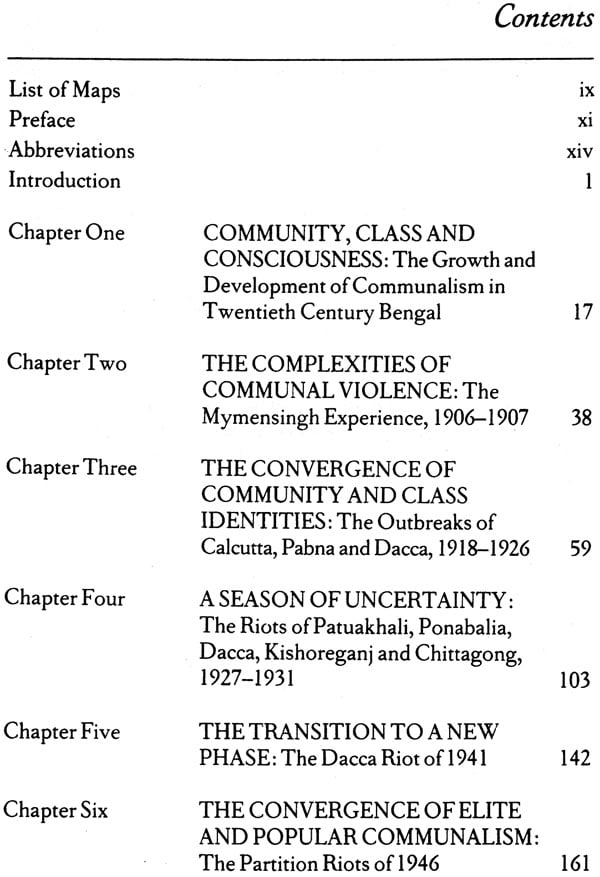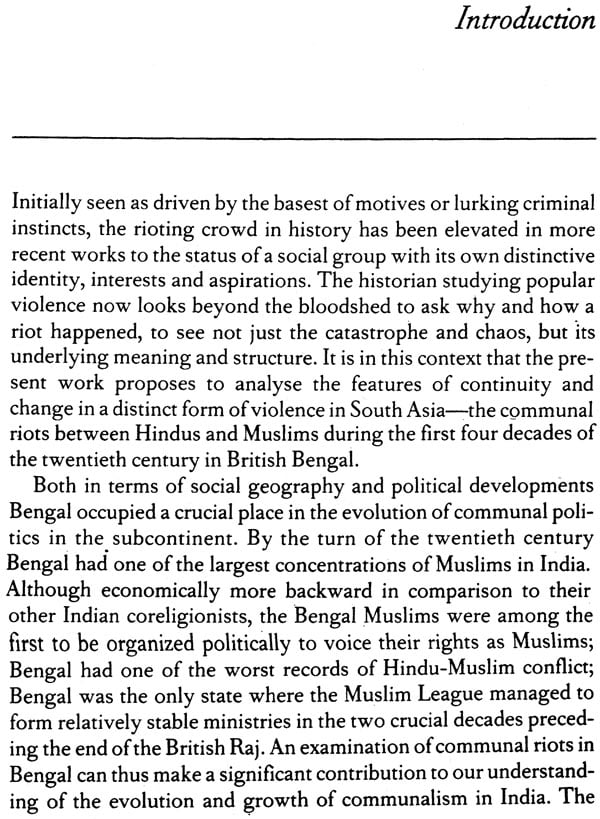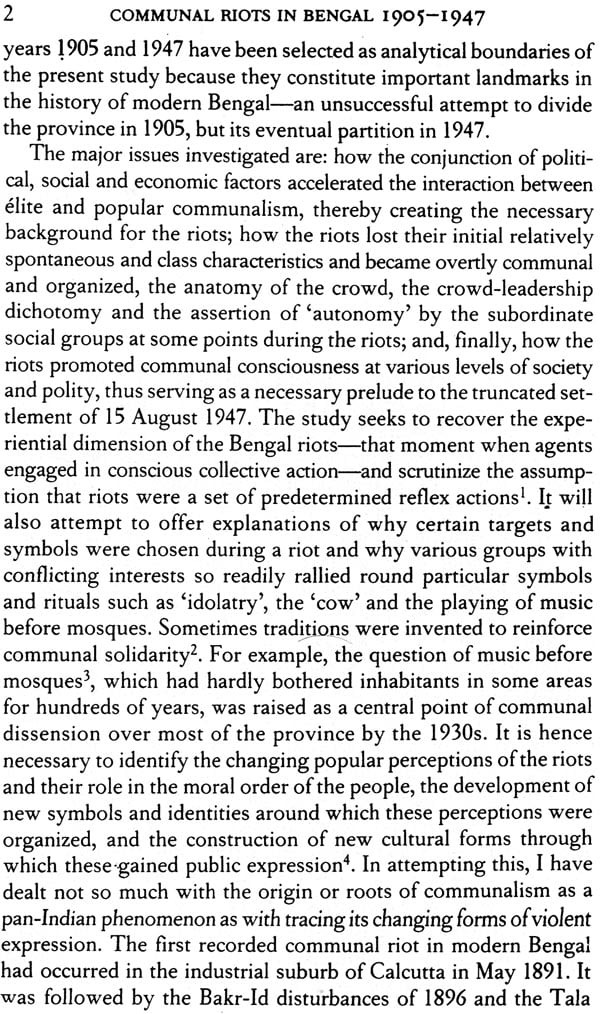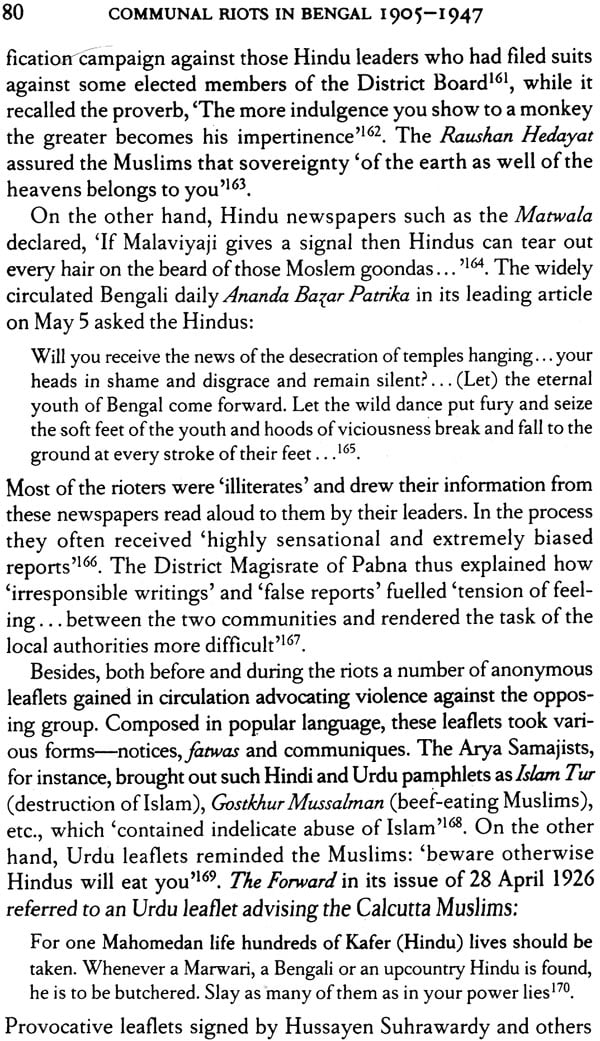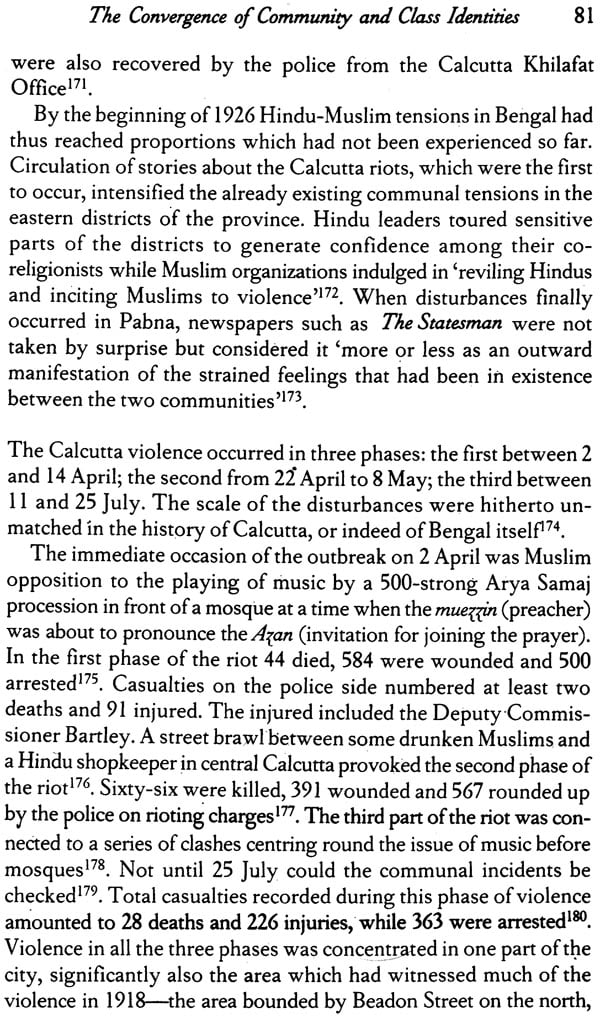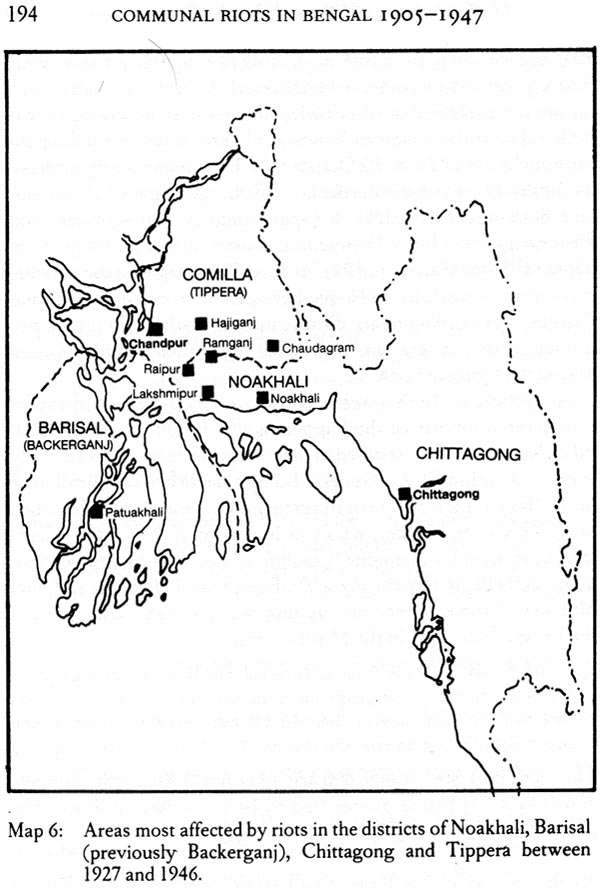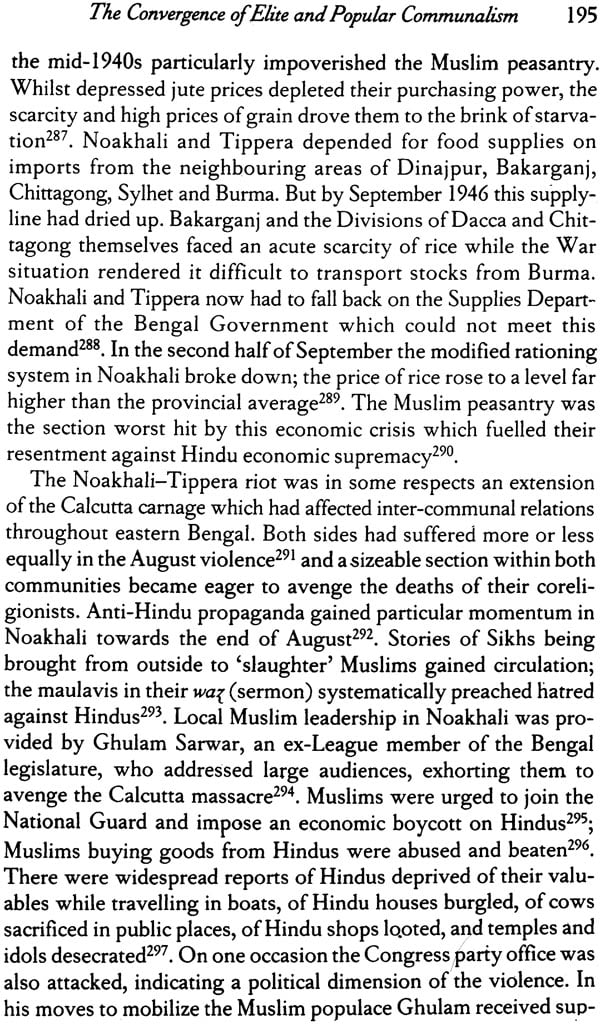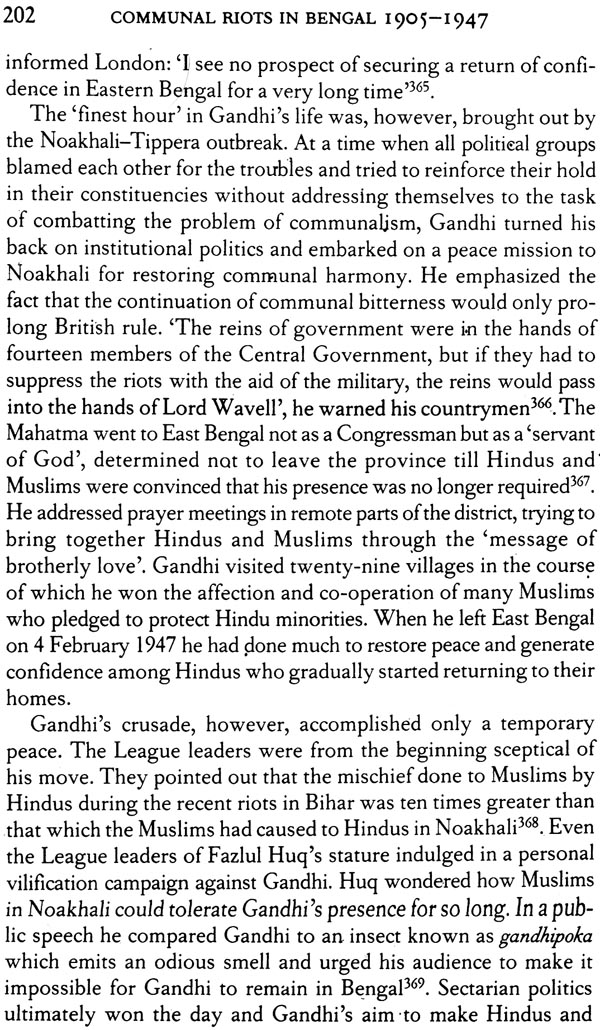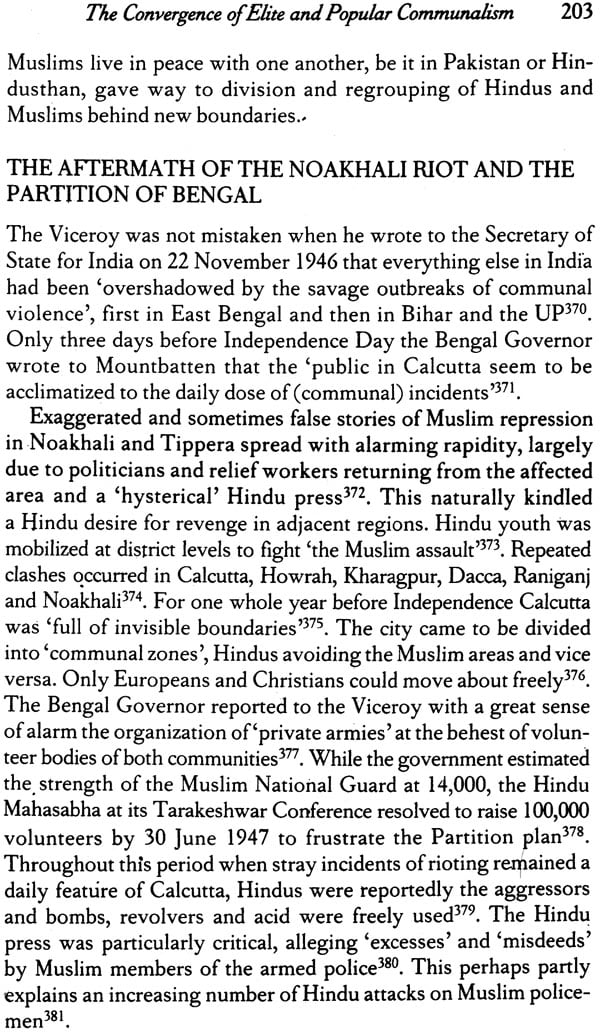
Communal Riots in Bengal (1905-1947)
Book Specification
| Item Code: | NAS222 |
| Author: | Suranjan Das |
| Publisher: | Oxford University Press |
| Language: | English |
| Edition: | 2022 |
| ISBN: | 9780195632330 |
| Pages: | 328 |
| Cover: | PAPERBACK |
| Other Details | 8.50 X 5.50 inch |
| Weight | 290 gm |
Book Description
This book examines the changing pattern of Hindu—Muslim riots in Bengal between 1905 and 1947 by addressing the following issues: how an increased conjunction of élite and popular communalism created the necessary background of the riots; why the riots lost their initial class basis and became overtly communal; how a crowd-leadership dichotomy manifested itself during the riots; and finally, how the riots promoted communal consciousness at various levels of society and polity which provided an important backdrop to the partition of the: province. At the same time it has been emphasized that there was no uniform progress towards separatist politics in Bengal, although ultimately mainstream nationalism failed to keep the predominant section of Bengali Muslims within its orbit. This book will contribute to a better understanding of the phenomenon of communal identity in the history of modern India.
Dr. Suranjan Das is presently Reader at the Department of History, University of Calcutta. From 1988 to1992 he was also an Honorary Junior Research Fellow at St. Antony's College, University of Oxford.
This book is a revised version of my 1987 Oxford doctoral dissertation. I was extremely privileged to receive help from many in the course of writing the thesis and then transforming it into a book. Dr Tapan Raychaudhuri very kindly acted as my research mentor. While encouraging me to explore the many avenues of enquiry which suggested themselves, he helped me to focus on specific themes and at a later stage corrected the draft of my thesis with meticulous detail. Dr Sumit Sarkar supervised me for one term in 1984 and clarified many of the preliminary methodological problems. Dr David Arnold, Dr Peter Robb, Dr Chris Bayly, Dr Rosalind O’Hanlon, Dr John Darwin, Dr Mushirul Hasan and Dr Neeladri Bhattacharya helped me to improve the initial draft of my thesis with their pointed and critical comments. Dr Gowher Rizvi was most encouraging and gave advice to strengthen my formulations. Shortly before the completion of the dissertation ] had the opportunity of having a discussion with Ranajit Guha who raised many new questions. Without, however, the constant encouragement and help from my friends in England it would have been impossible to submit the thesis in time. Ana, Edmund, David, Roger and Jim spent long hours in improving the manuscript; Nira, Hiranthi, Vineeta, Crispin, Chitta and Nandini gave moral support at times of crisis; Dina very kindly prepared the maps. A friend indeed, Marina provided considerable intellectual stimulus and I shall always cherish the many hours I spent with her in discussing the thesis and other related problems. I would also like to thank the Fellows, students and staff of St. Antony’s College, Oxford, especially the former Warden Sir Raymond Carr, the present Warden Sir Ralf Dahrendorf, my College Tutor Mr A. H. M. Kirk- Greene and the former Bursar Dr J. D. Bailey, who made my stay at Oxford pleasant and rewarding. I am particularly grateful to the Governing Body of St. Antony’s College for subsequently electing me to a Non-Stipendiary Junior Research Fellowship which facilitated my later visits to Oxford.
My teachers, colleagues and friends at Calcutta have been exceptionally kind. Dr Barun De not only cleared many conceptual confusions and suggested fresh lines of enquiry through lengthy correspondences when I was at Oxford, but also guided me during the preparation of the manuscript for the book. Discussions with Dr Hiren Chakravarti, with whom | initially started my research in Calcutta, have always been fruitful. Dr Nilmani Mukherjee, Dr Haraprasad Chattopadhyay, Dr Bharati Ray, Dr Jayanta Ray, Dr K. K. Dasgupta, Dr Benoy Chaudhuri, Dr. Jahar Sen, Dr Rajat Ray, Dr Sekhar Banerjee, Dr Arun Bandopadhyay, Dr Bireswar Banerjee and Dr Hari Vasudevan were extremely supportive. Dr Basudeb Chattopadhyay and Bhaskar Chakravarti helped me with their critical but constructive suggestions. I am also indebted to Sri Arun Ghosh for preparing the index at a very short notice. Sumit and Subhas never failed to be at my side in times of need. Suparna’s company during the final proof reading was a source of strength, but my relations with her are too personal to express any formal gratitude. Thanks are due to the staff of the India Office Library and Records (London), the Indian Institute Library (Oxford), the Centre of South Asian Studies (Cambridge), the National Archives of India (Delhi), the National Library (Calcutta), the West Bengal State Archives (especially Mr N. Ghosh, Mr A. Sen and Mr N. Banerjee), the Secretariat Library (Calcutta), the West Bengal Home Political Department (especially Mr A. Gupta), the Intelligence Branch Record Room (Calcutta), the Dacca Secretariat Record Room and the Dacca University Library. Mr Rathin Sengupta, IAS, and Dr Arun P. Mukherjee, IPS, were exceptionally helpful in giving me access to some hitherto unused police records. During my field- trip to Dacca I was fortunate to have the personal attention of Professors M.M. Islam and S. Islam, while Dr Ratanlal Chakravarti not only accorded me warm hospitality but also guided me in the Secretariat Record Room with his remarkable knowledge of local records.
To the Government of India I am grateful for the award of a National Scholarship which enabled me to study at Oxford for the D. Phil. degree. My researches were also supported by liberal grants from the Beit, Frere, Bryce and Read Funds, the Radha- krishnan Memorial Bequest and the British Council.
Finally, I would like to put on record how honoured I feel to be able to publish this work in the Oxford University South Asian Studies Series of the Oxford University Press.
**Contents and Sample Pages**
